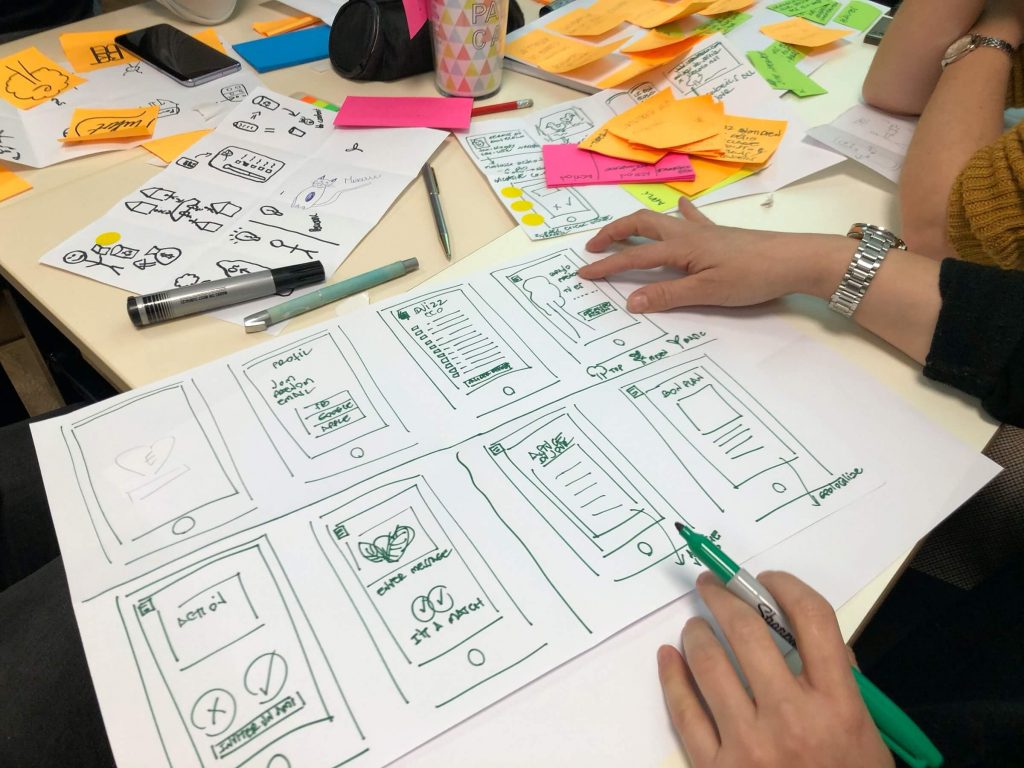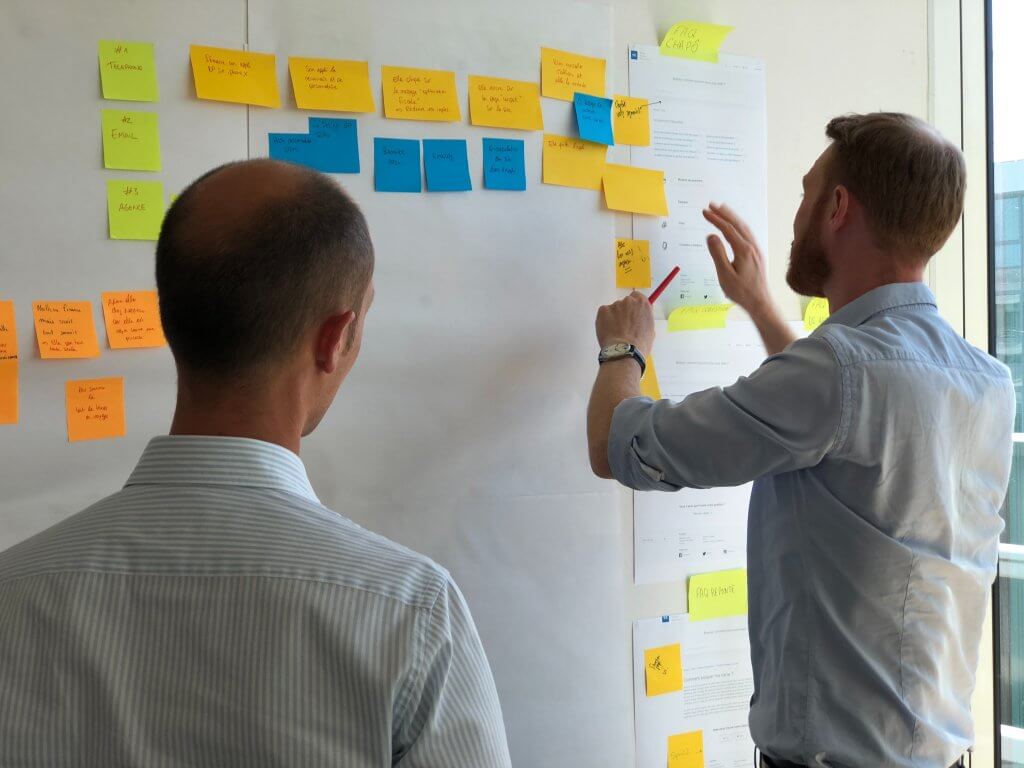No pain, no gain: Why design is hard, and shallow learning won’t cut it
Learning design thinking is tough – here’s how to make it stick
In our first post from our 6-part ‘Design thinkers can change the world – Conversations with Jeanne Liedtka’ series, we share what Jeanne had to say about how to create learning experiences that make people truly effective with design thinking.
Having worked with corporate teams around the world, as well as countless MBA students at the University of Virginia Darden School of Business, Jeanne has invaluable experience and insight to share on this subject.
So I asked her: What does it take to equip non-experts to make a truly transformative impact with design thinking? What difference does the way we ‘experience’ design make to the results we can achieve?
This is what she said.
You’ve got to get comfortable with ambiguity
I think comfort with ambiguity is one of the defining traits that distinguishes people who are naturally and intuitively design thinkers from people who need carefully structured learning experiences to get there.
I really believe everyone can get there, but if you take someone who’s not intuitively able to handle ambiguity and you just throw them into deep water, you will lose them at the really challenging parts of the process.
Structure makes people feel safe
And I think that’s where the structure piece comes in. You can’t put people through that experience without trying to surround them with a sense that they are safe and that they will come out the other end in one piece.
To me that is the ultimate beauty of the design thinking process and its structure – the people I teach, who are all non-designers, really benefit from that kind of scaffolding and artificial linearity. They need that illusion that things are still under control in order to step into this world where we’re willing to ask a question that we don’t even know has an answer that we can create.
And for those of us who are working with business people, engineers, scientists, nurses, elementary school teachers… they all need that structure to feel comfortable. Otherwise I worry that you will not get them through the process, a process that’s deep enough to trigger real learning, but also that triggers these kinds of anxieties and discomforts.
That’s what excites me so much as an educator about design thinking, that ability to both challenge people at their core, but at the same time provide a level of support that means they can get through it.

Learning design thinking is not an easy journey – and it’s not supposed to be
There’s a Buddhist philosopher who says difficult times can make us hard or they can make us soft, and I think that’s the issue you confront as learners. When we’re confronted with difficulties, we can do two things – we can shut down and reject or we can open up, make ourselves vulnerable and accept what is. And it’s that willingness to make yourself vulnerable and accept that leads to the personal growth that takes you to the next stage.
But people don’t do that willingly, and that’s the advantage of having students who need to get credits to graduate – they have no choice.
Stick with it, trust the process, and you will get there
Some of my students talk about feeling trapped and unable to escape this process that is so uncomfortable for them. The beauty is, after teaching these classes for 12 years, in their moments of deepest anxiety, I can say: Look, you are going to come out the other end. If you just stay with us, do the work, work with your team, and you give it your best effort, you will succeed, I can guarantee that. I think a lot of times they’re willing to just trust me that that’s true.
And it is true, you get this wonderful blossoming of people, as they discover that they are in fact capable of a level of creativity that they simply didn’t believe they had in them. And what can be more empowering for people than that discovery?
You can’t skip the tough stuff
My pet peeve of course is the one day hackathon. These events that are fun and abstract and engaging but that don’t really reflect meaningfully the hard work of design thinking.
People don’t change because everything is wonderful. You have a great experience when you’re in your comfort zone, but it’s those moments of discomfort that are so often what changed us.
Shallow learning won’t get the outcomes you need
The risk with design thinking is we bill it as transformational. But if the learning is shallow, it is not transformational. It’s just a longer feel good way of getting to a set of answers you could have gotten to anyway.

Classroom learning alone doesn’t help business people make change happen because it’s risk without reward
The model of going to the classroom, learning something, then going back to work and applying it just doesn’t work for design thinking. It doesn’t work for a great many things, but it really doesn’t work for design thinking because of the depth of the changes in behaviour that you’re trying to encourage and how threatening those changes can be for the people that you’re trying to do them with.
As much as organisations say they will reward taking risks and customer centricity and all this kind of stuff, they don’t. They reward people mostly who keep their heads down and stay out of trouble.
So it’s a very complex situation in which to accomplish behavioural change. And even though people know they need to apply it, and they realize in their head that it would be valuable if they could, they don’t have any help to get through the challenge of applying it.
Practice running projects is vital to cement the learning
From a pedagogical viewpoint, projects serve a very specific purpose.
There are things that can be taught in a classroom, and there are things that, no matter how expertly you deliver the learning, until someone struggles with the application of the learning, they won’t get it.
And if they go through that struggle without support, they have a much higher probability of failure. So the whole purpose of making learners do projects is so that they do them in the confines of a class rather than afterwards.
Get the learning right and it can change how people see the world
The beautiful part is, there’s a core nucleus of people who will fall in love with design thinking and it will transform the way they see the world and they will never be the same again. Even when you put them back in that world, they may not be able to revolutionise that world, but something has shifted for them, and you’ve built an awareness and some competencies that don’t go away – that is, if the process of learning them is done in a careful enough way.
